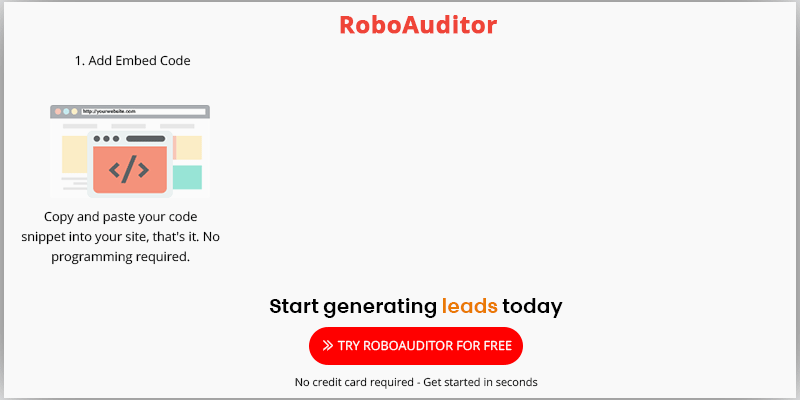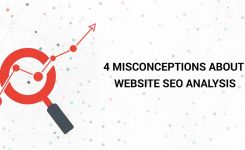Website SEO
God Damn! my website traffic is not increasing at all
There are many reasons as to why a website or blog may not be getting enough traffic.
There is no one single answer to the question of how to increase organic traffic on the website, but the following is a detailed checklist if followed correctly make sure that you will double your traffic in the shortest period with no marketing expense.
1. Are you Google-friendly?
Google is the top player in the search engine world. One has to be visible on Google for your website traffic to increase, be seen, and get business. The following are some tips to make your site Google-friendly.
I. Search Engine Bot Friendly
Jon Glick of search engine Become.com states that “Robots are great at finding links and content,” “But they are dumb.
They can’t process cookies or javascript.” He talks about how to create bot-friendly sites using tactics such as hyperlink navigation, or navigation that uses “pure” links with no Javascript.
This leads to getting easily indexed by the Google search engine and thereby increasing website traffic to your site.
II. Robots.txt
This file is used to give instructions on the site. Two important considerations when using robot.txt: Robots can ignore you especially malware robots and email address harvesters.
The robots.txt file is a publicly available file. Anyone can see what sections of your server you don’t want robots to see. Google uses them to index web content. This should be used only to control crawling traffic.
III. Sitemaps
In simple terms, the sitemap is like an archive of every page in your website, typically organized in a hierarchical manner. This should be easily recognized on a website in order for search engine crawlers to stumble upon it.
The Sitemap is Important because it tells the search engines the content that is present on the website and how often it has been updated.
This is crucial because search engines rank web pages and not just websites. Having an XML sitemap improves a website’s SEO.
IV. Page Title
One should not neglect the manner in which one’s site is presented via the Title Tags and meta descriptions, which play an important role in how search engines like Google view your site.
It is important that you use the right keywords pertinent to the content on the page to improve the site’s SEO.
V. Enable Compressions
With file compression, you can reduce the size of the web page files up to a maximum of 70%.
This means faster loading time and amounts to better status with the search engines. You can achieve this by setting up a compressed version of a file on the server side, which is smaller and therefore takes less time to send the same to the user’s browser.
The file is decompressed on the user’s site resulting in faster file transfer.
VI. Minify JS and CSS
Minification in JS and CSS is the process of removing all unnecessary characters from the source code without changing its functionality.
It is useful for interpreted languages deployed and transmitted on the internet, such as javascript, because it reduces the amount of data that needs to be transferred.
JS and CSS Resources may be minified while reducing their file size but at the same time, preserving their functionality. JS source can make code readable and debuggable even after it has been combined and minified.
VII. User Experience
User experience – UX, for short – is how a person feels when interacting with a digital product. UX encompasses a lot of factors, some that are controllable by designers and developers, and some that are environmental or just user preference.
UX is the experience, emotion, intuition, and connection a user feels when using a site or product. Usability is more about the effectiveness of site design and how user-friendly it is. Usability is a key component of the overall user experience.
VIII. Mobile Responsive
Mobile devices are rapidly changing the world. A not-so-mobile-friendly website version may require one to pinch or zoom in order to read the content, which can be frustrating, whereas a mobile-friendly version is readable and usable immediately.
Making a Mobile Friendly Site depends on developer resources, business models, and expertise. As the number of people accessing the web on a mobile device increases, it makes sense to have a mobile-responsive site to increase website traffic.
Key points for going mobile:
– Signal to Google when a page is formatted for mobile use as this helps search engines to serve mobile searches accurately.
– Do not use robots.txt to block search engines from accessing critical files.
– Avoid common mistakes that frustrate mobile visitors, such as featuring unplayable videos.
IX. Legible Fonts
Web fonts were developed, allowing designers to use custom fonts that aren’t available on computers while still ensuring their design (and overall branding) remains consistent no matter who’s viewing it, or where.
X. Images and Alt text
Optimize Images: The Alt tag is the most important image optimization factor.
The text in the alt tag is displayed if the image cannot be shown or is taking too long to load.
Most of search engines are text-based and hence cannot read images or videos.
Creating descriptive keywords with file names is very important for Optimizing Images.
Some pointers for image optimization
-Use the right image.
-Choose the right file format.
-Use informative file names.
-Pay attention to alt text.
-Separate thumbnails from the main pictures.
-Create image sitemaps.
-Do not rely on third-party image hosting.
-Integrate social media.
-Lastly, when in doubt, always consult Google’s webmaster guidelines.
2. Are you social on the Web?
Social networking is an online platform used to build networks in cyberspace. Social gatherings performed the function of bringing people together, and these worked as networking platforms in earlier times.
The web now serves as the platform for the network for various reasons ranging from friendships to business to employment etc. The most popular networking sites presently are Facebook, LinkedIn, Twitter, Instagram, etc.
Website traffic will increase on your website only if you provide something of value to your audience. The content has to be cued in a way that it easily connects with the audience and gets shared multiple times. It needs not only to be creative but also have images, videos, blogs, etc.
According to research by Dan Zarella, a social media scientist at Hubspot, the following are the best times to be visible on Facebook:
-12 AM Best time to share things.
-11 AM to 4 PM Best time to post a story or piece of news.
-Saturday: Best day to share and get comments.
-7 PM: Highest involvement rate after the workday.
-Twitter: 5 PM Most retweets happen at this time, which makes it the best time to post.
The more times we upload content during the day, the more visible we are as people will take notice of us in real-time.
I. Facebook:
We will continue to be a visual generation not just because people use more pictures, but because it has been proven that 90% of the information received by the brain is visual and is processed much faster than text.
Research performed by Hubspot indicates that 50% of likes are often from a picture than any common post on Facebook. 84% more clicks are garnered by posts that include a picture or an image.
A good picture must have a relevant link that will redirect traffic to your website, blog, or a piece of news you may want your followers to read. Adding icons on your website, blog, newsletters, and in specific articles, optimizes your blog.
II. Instagram
Struggling to boost your website traffic? Elevate engagement with captivating Instagram video content. Utilize an Instagram Reel maker to craft visually stunning and compelling short videos that resonate with your audience. Leverage trending hashtags, and engaging captions, and collaborate with influencers to amplify reach. Consistency is key—regularly post high-quality, relevant content to enhance visibility and encourage shares. With over 2 billion monthly active users on Instagram, Engage with your community by responding to comments and messages promptly.
This holistic approach, combined with strategic content creation, will not only boost your website traffic but also foster a vibrant online community around your brand. By aligning with Instagram’s massive user count and employing these strategies, you can effectively revolutionize your online presence, driving substantial traffic to your website.
III. Pinterest:
This site has more than 48.7 million users and has become the fastest-growing social network since brands can show their products to a large community of eager buyers who expect to find the perfect product.
It allows one to repin an image of a product posted a while back and get the same amount of attention today.
For example, a pretty piece of décor posted sometime back may have gone unnoticed and, when repined in a couple of months time might have caught someone’s eye, and you could sell it.
It always makes sense to post every day to create an interest among your audience to announce special offers and unique products. If you want to put up an item on sale, include a good call to action, an impressive picture of the same, and a link to the product.
3. Is everyone your customer? Buyer Persona:
A buyer persona is not simply a profile of your buyer, but the knowledge to align marketing decisions right from messaging through content marketing and sales enablement with your buyer’s expectations.
When you have to know how to help buyers analyze your approach on their own terms, a bond of trust is built. This insight reveals who and what impacts the buyer as they evaluate their options and arrive at one.
For persuasive messaging and content, the buying process insight specifies the decision criteria, success factor, and/or perceived barrier that has the most impact on the buyer’s choice at each step.
“Personas of all kinds (user, customer, buyer, partner, etc.) are critical inputs to any customer-focused exercise including customer journey mapping,” according to Michael Hinshaw, CX strategist and president of Mcorpcx.
4. Are you available for chat and e-mail?
Create a sign-up center on your site, which is visible on all pages. You can also use techniques like taking people to the sign-up page when they click on “learn more” information links or create a pop-up inviting them to sign up if they have posted a blog comment. Always let them know their information will not be shared.
The most reliable form of e-mail subscription is “verified opt-in” by signing up and are then invited to validate their subscription by following a link in the confirmation e-mail sent to them. This has been seen to reduce spam significantly.
Provide a lot of terrific content on your site using charts and graphs, which many readers perceive as the sign of expertise.
Always include the physical address of your company in each e-mail message and an easy unsubscribe option.
Importance of availability on chat
An online chat system provides customers with immediate access to help. Wait times are often much less than a call center.
Live chat software has consistently demonstrated that it can save on both employee task time and phone expenses. It reduces overall contact center costs by lowering average interaction costs.
It increases efficiency by allowing live chat representatives to handle multiple chats simultaneously, thus reducing the need to hire more representatives.
With employees spending less time on the phone, they can multi-task during chat conversations and cut the waiting queue to a fraction of its former size when compared to the call center. It increases overall sales.
The key is that customers have someone who can immediately walk them through if they have a question. This eliminates bounces from retail websites and ensures that full shopping carts make it through the checkout, and your website continues to have increased website traffic.
Forbes magazine reported, “In 2008, Wells Fargo made a second attempt to leverage online chat to drive sales, and happily, this time results have been crystal clear.
High customer satisfaction scores and a double-digit increase in converted shoppers have shown the value, once and for all of this technology.’’
An edge of your competition:
If you want to have an edge over your competitors, live chat is a key feature that websites must have in order to be competitive. In fact, live chat provides a simple way to connect with customers who spend a good deal of their money online.
The cost savings and convenience for both the staff and customers make it not only a viable option but essential for any company that tries to provide excellent customer service, and ensure increased website traffic.
Tap into customer pain points:
A customer’s frustration or need that has yet to be fulfilled is called a pain point, and marketing teams mine social media and message boards for these pain points.
‘Armed with these pain points, we can either write new content or create benefits for our advertising ‘says marketer such as Markus Allen.
Live chat provides immediate access to the customer’s pain points. They will try to ensure that a product will perform as advertised or that a promotion will provide the discount they want.
5. Are you writing Blogs
Write and present interesting and appealing content that will increase your ranking in social media. If people understand and like your text, they will share, like tweet, and link to your post, which will increase your ranking on Google.
The dynamic markets and customers will determine how the traffic flows, and therefore it is of utmost importance to keep reinventing yourself in the cyber world by posting SEO blogs and staying relevant to your customers.
RoboAuditor is an Embeddable SEO Audit Tool, which generates 4X more leads with the traffic you already have.





